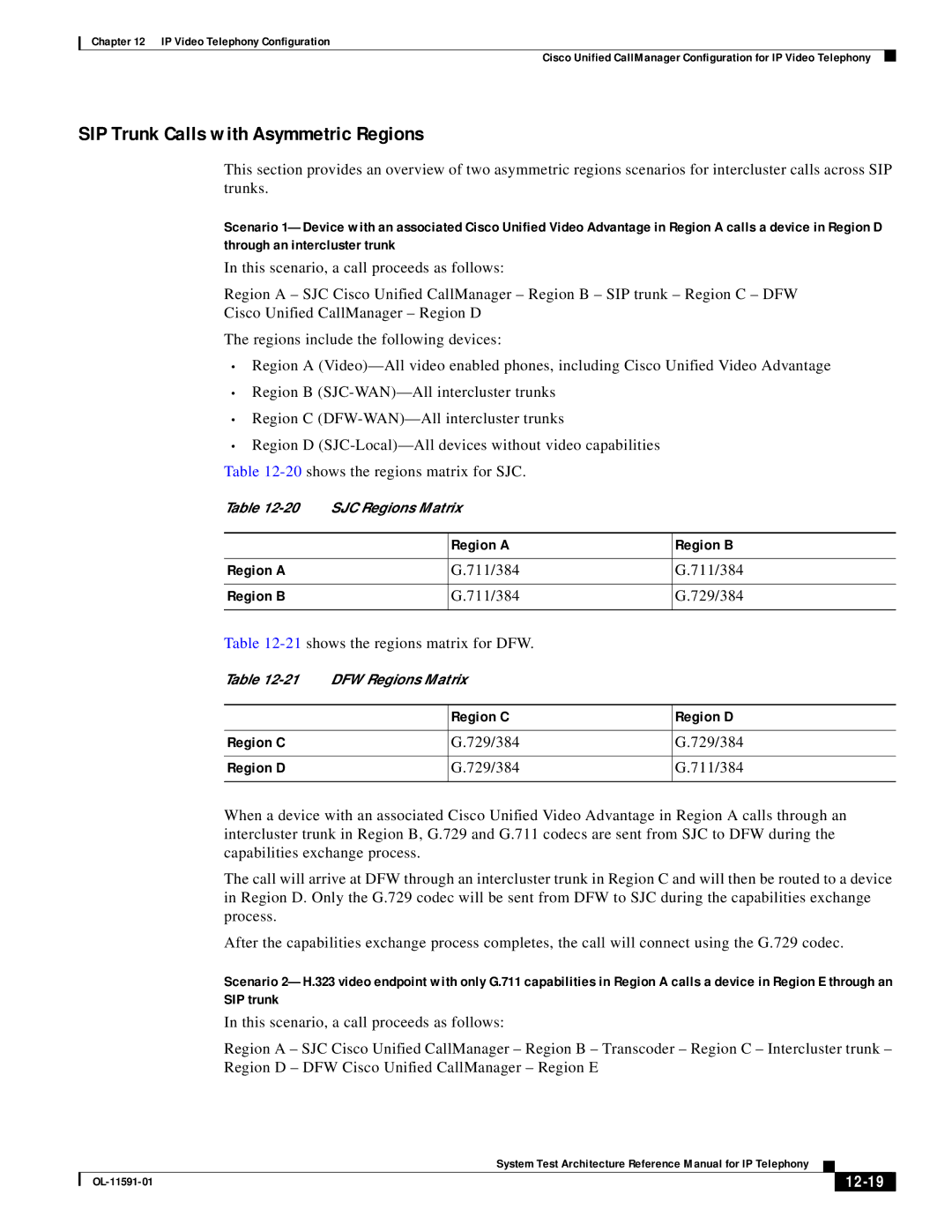
Chapter 12 IP Video Telephony Configuration
Cisco Unified CallManager Configuration for IP Video Telephony
SIP Trunk Calls with Asymmetric Regions
This section provides an overview of two asymmetric regions scenarios for intercluster calls across SIP trunks.
Scenario
In this scenario, a call proceeds as follows:
Region A – SJC Cisco Unified CallManager – Region B – SIP trunk – Region C – DFW
Cisco Unified CallManager – Region D
The regions include the following devices:
•Region A
•Region B
•Region C
•Region D
Table
Table | SJC Regions Matrix |
| |
|
|
|
|
|
| Region A | Region B |
|
|
|
|
Region A |
| G.711/384 | G.711/384 |
|
|
|
|
Region B |
| G.711/384 | G.729/384 |
|
|
|
|
Table
Table | DFW Regions Matrix |
| |
|
|
|
|
|
| Region C | Region D |
|
|
|
|
Region C |
| G.729/384 | G.729/384 |
|
|
|
|
Region D |
| G.729/384 | G.711/384 |
|
|
|
|
When a device with an associated Cisco Unified Video Advantage in Region A calls through an intercluster trunk in Region B, G.729 and G.711 codecs are sent from SJC to DFW during the capabilities exchange process.
The call will arrive at DFW through an intercluster trunk in Region C and will then be routed to a device in Region D. Only the G.729 codec will be sent from DFW to SJC during the capabilities exchange process.
After the capabilities exchange process completes, the call will connect using the G.729 codec.
Scenario
In this scenario, a call proceeds as follows:
Region A – SJC Cisco Unified CallManager – Region B – Transcoder – Region C – Intercluster trunk – Region D – DFW Cisco Unified CallManager – Region E
|
| System Test Architecture Reference Manual for IP Telephony |
|
| ||
|
|
| ||||
|
|
|
|
| ||
|
|
|
| |||
